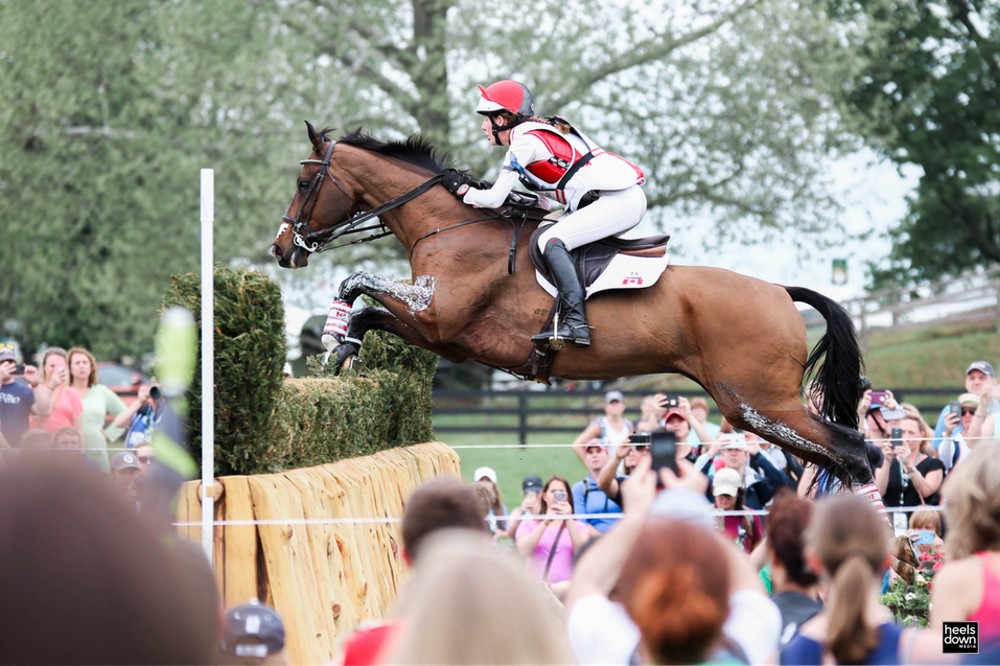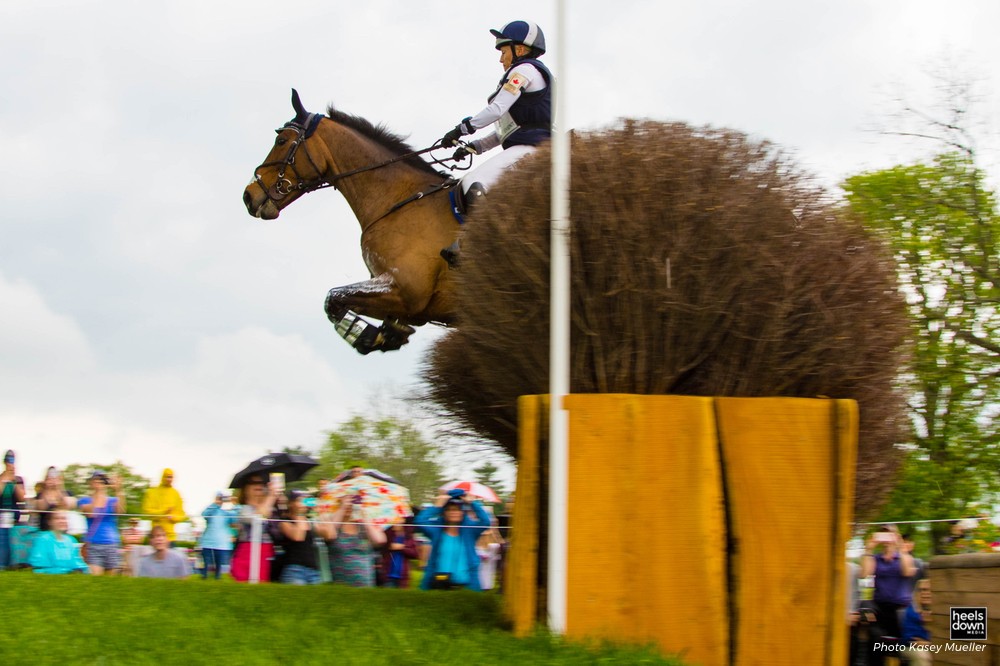Numbers Game: Using Data to Disrupt Equestrian Sports

This article first appeared in the January 2017 issue of Heels Down Magazine. For stories worth reading, subscribe now.
By Caroline Culbertson
The prioritization of statistics and data began over a decade ago in other sports, and horse sports are next in line. With looming uncertainty around changes to the Olympic format, ongoing examinations of safety, and concerted efforts focused on growing the sports’ popularity, data analysis has captured the attention of governing bodies and riders across the world.
“It’s the key whether you’re a rider trying to improve your riding, or a high-performance unit trying to manage your riders, or an owner wanting to buy a horse, or a fan trying to engage with the sport, or a governing body trying to keep horses and riders safe,” says Sam Watson, co-founder of EquiRatings, the leading data analysis and content company in the equestrian world. “Or if you’re in media, you need to know when athletes are breaking records or accomplishing personal bests, so you can give fans a bit of context.”
On the Shoulders of Giants
“I think we’re late to the party, but it’s incredibly important,” says Doug Payne, CCI4* event rider who sits on the board of governors of the U.S. Eventing Association.

Data-driven sports decisions began most notably with Oakland Athletics’ General Manager, former ballplayer Billy Beane, as chronicled in the 2003 book “Moneyball” by Michael Lewis. Previously, player trades and drafts and game plans were made largely on intuition and experience. The ability to gather and analyze vast amounts of data during sports play has turned this on its head.
Now, major professional sports teams have at least one analytics expert on staff for that team. Websites like Nate Silver’s FiveThirtyEight.com are dedicated to data-based predictions and in turn, edifying the fan experience. The NBA has installed six cameras in the catwalks of all 29 NBA arenas to track the movements of every player on the court. This form of technology called Player Tracking allows analysts and coaches to determine player efficiency, defensive and offensive plays, and also serves fans who want to gain a next-level understanding of the sport.
The Fan Experience
As horse sports aim to build a fanbase and become increasingly mainstream, technology can aid in the fans’ understanding of the rules.
We need to figure out a way to package our sport so it can easily be consumed by spectators.
Since 2013, Multinational software corporation SAP has developed two products to enhance the fan experience of arguably the most confusing of all disciplines – eventing. Olympian and eventing titan Ingrid Klimke worked with SAP to develop a real-time competitor tracking program for competitions called SAP Equestrian Analytics, allowing fans to visualize the action on the cross-country course including the horse’s speed, time on course and position on course. SAP Audience Judging also allows fans to try their hand in scoring alongside the officials via an app, and in 2017 will reveal Analytics for Showjumping.
“All projects clearly aim at bringing the spectators – onsite and online – much closer to the action and helping commentators and media tell better and more informed stories, rising the attractiveness of the Sport for even larger audiences,” says Henrike Paetz, Sponsorship Program Lead Equestrian Sports. “Athletes profit alike by being able to better analyze their performances and communicating with their fans in new ways.”
The FEI is also taking an active role in supporting this movement, an FEI spokesperson explaining that they are working with “a number of external providers on data and statistical analysis”.
“The applications for broadcast material, clips and social media provide endless possibilities, and the use of statistics and analytics is fantastic for engaging fans and increasing the understanding of the sport for all types of audiences,” says the FEI Spokesperson. “It is also exciting to see the huge popularity of spectator judging apps in dressage, enhancing the audience experience, and this is something that we actively support and encourage.”
While the verbiage of “data analytics” might evoke the image of pages of numbers and graphs, according to Diarm Byrne and Sam Watson, co-founders of EquiRatings, sports fans are already accustomed to absorbing this information and putting it to use.

“My mom will tell me that Andy Murray Scottish professional tennis player] is brilliant at tennis because he converts so many of his break points – or his first-serve percentage, or his average speed of his second serve is very high. You know, because this is information that has been given to them subconsciously,” says Sam. “That’s what the kind of the shareholders of this sport, the people who are trying to grow it, need to do.”
Safety Quantified
The next step, says EquiRatings, is making sure the sport is fan-friendly and not “thrills and spills”.
“Now, we’ve got to combine [the integration of data] with something that is really important, which is the welfare of the horses and the safety of the rider,” Sam explains. “The last thing we want to do is promote this sport, attract a big audience, and then produce a spectacle which is a bit unsavory and not nice. Plus, we love horses and we want to protect our riders and keep them safe.”
EquiRatings developed the EquiRatings Quality Index (ERQI), a safety analysis tool for governing bodies that calculates a risk rating to every horse and rider combination. A lower ERQI rating may indicate an inconsistent performance at a level, so that the governing body or rider may elect to add more solid performances before moving up. Eventing Ireland implemented the system for the 2016 season for the national two-star level, and the number of falls on cross-country dropped from 33 in 2015 to 11 in 2016.
Diarm explains that the ERQI system is a better indicator of horse and rider preparedness to move up in competition level than qualifications and minimum eligibility requirements.
“If we are at a big international competition and there’s a horse fall and we, as a sport, think that it’s random or unfortunate -just a rough day at the office for that rider. Is it though?” Diarm questions.
If you’ve met the qualifications to compete at the three-star level, but at the two-star level your record was [a mess], you may be qualified, but if you fall, is it about bad luck? Not really. Is it a preventable horse fall? Absolutely.
High Performance Potential
EquiRatings got its start when Sam Watson, who earned a Bachelor of Arts in Management Science and Information Systems from Trinity College in Dublin, wanted to pinpoint his own weaknesses in his eventing record. From there, he and Diarm began to study the trends of the top riders and develop algorithms to make sense of the numbers. They realized this was already being done in sports all over the globe, but equestrian sports had yet to hop on board.
“Coming third at the Blenheim CCI3* which has 110 starters, versus coming third at a three-star somewhere else which only has ten starters, it’s got to be weighted differently,” says Sam. Things like course difficulty and judge variability also come into play.

National governing bodies are keen to improve team making and strategic competition decisions. At the U.S. Eventing Association’s Annual Meeting last December, EquiRatings and data analytics was at the forefront of conversation. Eventing Ireland has already implemented the ERQI system.
“British Eventing recognises that the improved use of technology and data analysis is incredibly important in order to help with informed decisions in all areas of the sport, this includes training, team selections, risk management and the development of eventing and how it is presented – a key element of the ongoing Olympic Agenda 2020 project,” says British Eventing Chief Executive David Holmes.
Likewise, U.S. Equestrian CEO Bill Moroney explains that the ability aggregate and analyze data will work in the favor of everyone from athletes to sponsors to horses. “These topics include horse and rider safety and welfare, growing fan membership, educating current and potential equestrians about our sport and its diversity, trends and shifts in the marketplace and much more.”
SAP’s Henrike Paetz says that tradition and technology can coexist. “While equestrian is looking back and maintaining a long and proud tradition, it is on the other side actively seeking for ways to improve the sport with technology.”
Download the Heels Down Magazine app in the iTunes AppStore: http://apple.co/1QicprS or Google Play for Android phones and tablets: http://bit.ly/1sXQV75. Don’t forget, the first issue for new subscribers is FREE for 30 days!


